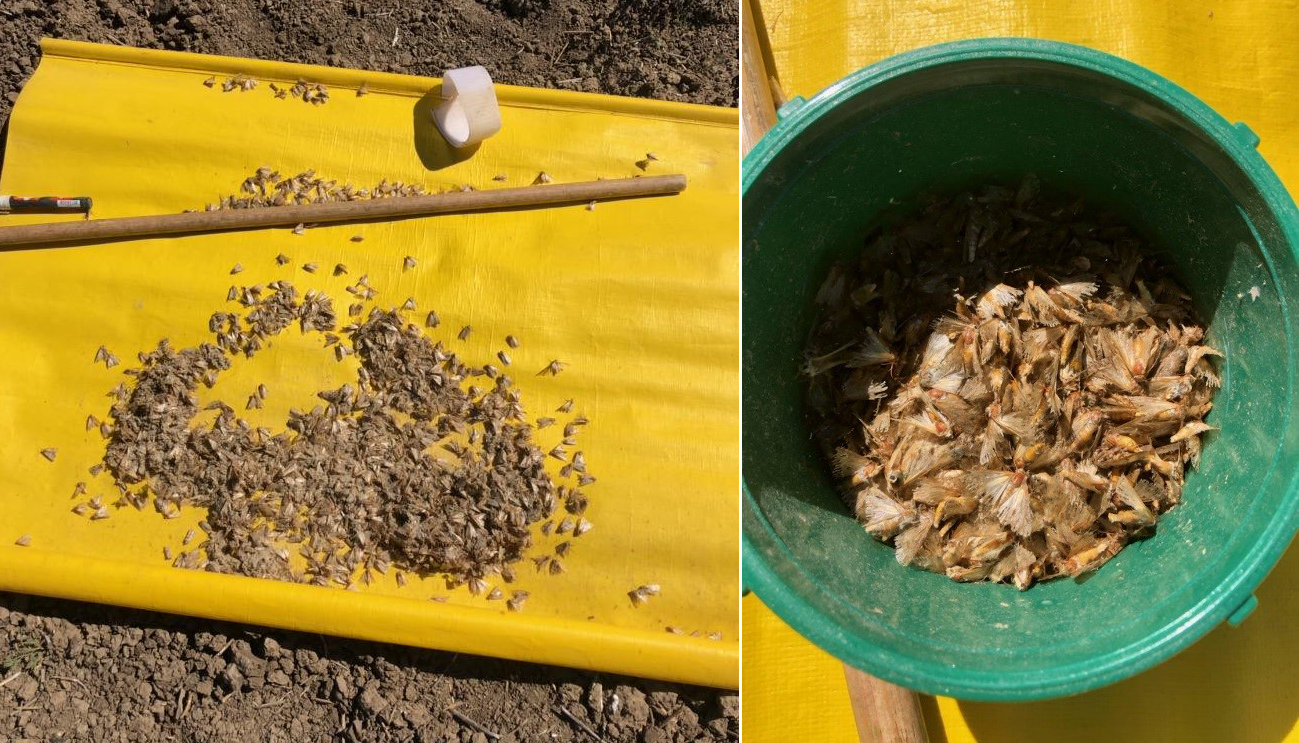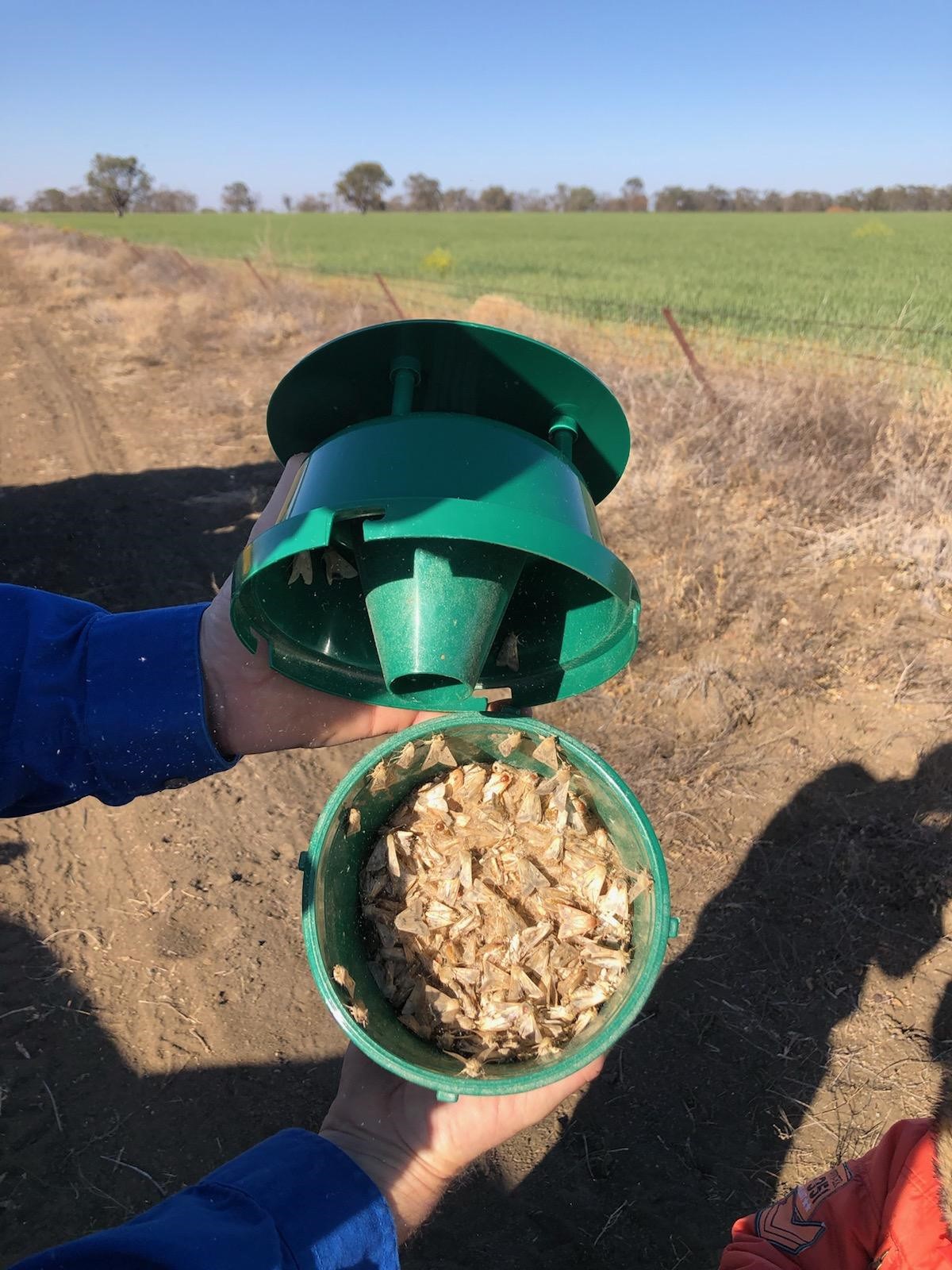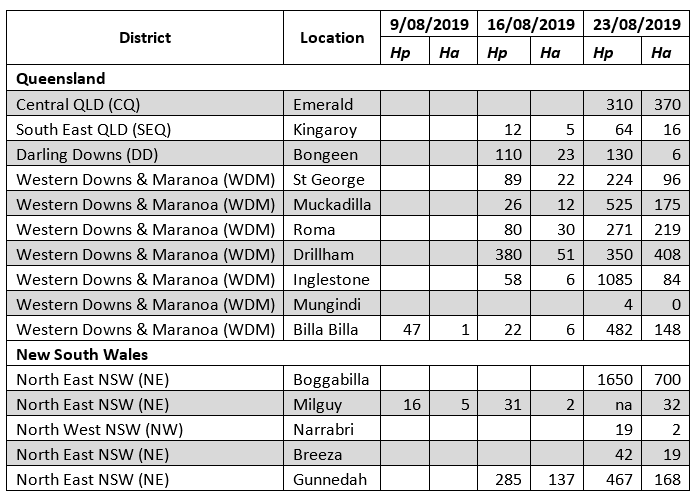The yearly Helicoverpa spp. pheromone trapping program for the Northern Grains Region, run by the Queensland Department of Agriculture and Fisheries (DAF), has recently commenced. During the first few weeks of trap catches, trap operators have detected flights of both H. punctigera and H. armigera in pheromone traps across the Northern Region (Table 1).
Table 1. Latest Helicoverpa spp. pheromone trap counts from the Northern Grains region. Numbers in the table are standardised counts for seven trap nights, calculated as (total moths caught/trap nights) x 7.
As we have seen in the last five years of our trapping program, H. armigera flights are consistently detected in cropping areas during August. Our results go against the conventional wisdom that during late winter only H. punctigera will be present in crops.
Trap locations are also experiencing very high catch numbers. This week’s trap catch from Leigh Norton, alongside a chickpea crop west of Goondiwindi, caught a whopping 1650 H. punctigera and 700 H. armigera (Figure 1).

Figure 1. Pheromone trap catch from west of Goondiwindi. Image supplied by Leigh Norton (Delta Agribusiness, Goondiwindi).
As agronomists and growers are making spray decisions in crops, it is worth keeping in mind that (i) all H. armigera populations should be treated as being resistant to synthetic pyrethroids, (ii) H. armigera has increasing levels of resistance to Steward® (Indoxacarb) and Altacor® (Chlorantraniliprole), and (iii) the primary function of pheromone traps is not to provide definitive counts, but to act as an ‘early warning’ for potential egg lays of either Helicoverpa species. To determine what species are actually present in your crop, and therefore what insecticide options you have available, there is no substitute for beat sheeting.

Figure 2. Pheromone trap catch of H. punctigera. Approximately 600 moths caught over 8 nights. Image supplied by Scott Loughnan of Muckadilla.
More information
- Keep up to date with the trap counts each week.
- For help discriminating between Helicoverpa species see the Beatsheet’s helicoverpa identification page and image gallery.
- See also more information on Helicoverpa management.
- Read the GRDC’s resistance management strategy for Helicoverpa armigera and check relevant spray windows.

